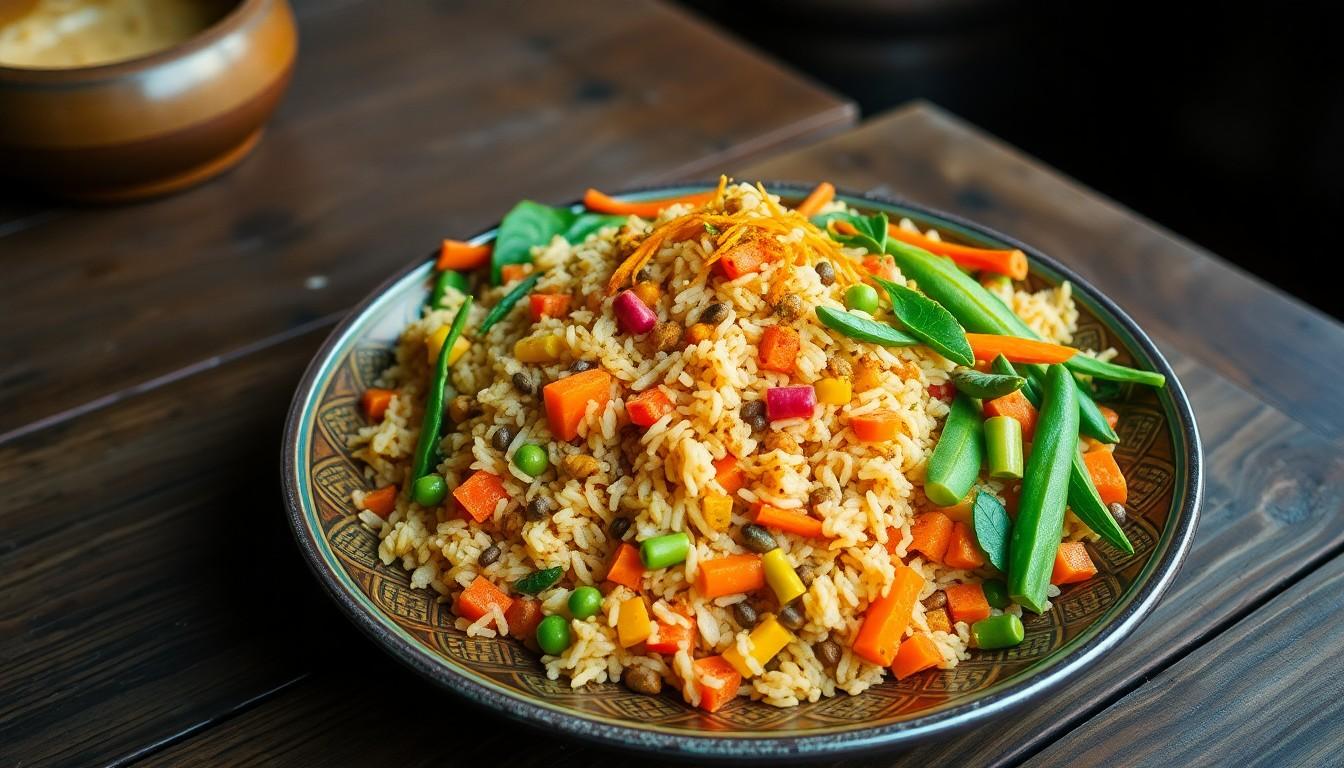In the bustling streets of Myanmar, a culinary gem awaits discovery: hingagyi. This delightful dish isn’t just food; it’s a flavorful adventure that tickles the taste buds and leaves diners craving more. Imagine a plate brimming with vibrant ingredients, each bite bursting with tradition and a hint of mischief.
Hingagyi isn’t your average meal; it’s a celebration of flavors that brings people together. Whether you’re a seasoned foodie or a curious wanderer, this dish promises to take you on a delicious journey through Myanmar’s rich culture. So, buckle up and prepare for a taste experience that’s as unforgettable as a good dad joke—because who doesn’t love a little humor with their dinner?
Overview of Hingagyi
Hingagyi represents a beloved staple in Myanmar’s culinary scene. Known for its rich flavors, this dish typically features a blend of spicy, savory, and aromatic elements. Primarily composed of rice, lentils, and a variety of seasonings, hingagyi captures the country’s diverse agricultural bounty.
Cooks often add ingredients like onions, garlic, and a range of spices to enhance its taste. The combination of these ingredients creates a depth of flavor that delights the palate. In addition, hingagyi commonly includes fresh vegetables, providing both texture and nutritional value.
Cultural significance accompanies hingagyi, making it a popular choice for gatherings and celebrations. This dish fosters community spirit, as families often share food during festive occasions. People prioritize experiential dining, turning meals into opportunities for connection.
Variations abound across different regions of Myanmar, showcasing local preferences and ingredients. Some versions substitute or compliment traditional components, while others may introduce unique spices or sauces. Each iteration tells a story of place and people, reflecting Myanmar’s culinary diversity.
Hingagyi not only satisfies hunger but also connects diners to a rich heritage. By enjoying this dish, individuals engage in Myanmar’s cultural narrative. The experience transcends mere eating, embodying a celebration of flavors that resonates deeply with those who partake in it.
Ingredients Used in Hingagyi

Hingagyi features a variety of ingredients that contribute to its rich taste and nutrition.
Common Ingredients
Rice serves as the main base, providing a hearty foundation. Lentils add protein, enhancing the dish’s nutritional profile. Aromatic onions and garlic bring depth to the flavor, while green chilies add spiciness, catering to different preferences. Spices like turmeric, cumin, and coriander infuse the dish with a blend of savory and fragrant notes. Fresh vegetables such as carrots, peas, and bell peppers offer texture and color, making each serving visually appealing.
Regional Variations
Regional variations of hingagyi highlight local culinary traditions. In coastal areas, cooks may include shrimp or fish, adding a unique seafood twist. Inland regions often incorporate seasonal vegetables, reflecting the area’s agricultural produce. Some variations experiment with additional spices specific to local tastes, creating distinct flavors that represent different cultures within Myanmar. These adaptations emphasize the diversity of ingredients available, showcasing the creativity of the community in each region.
Preparation Method
Hingagyi preparation involves a few essential steps that highlight the dish’s rich flavors.
Cooking Techniques
Cooking hingagyi starts with rinsing the rice and lentils thoroughly. Next, cooks typically sauté onions and garlic until they’re fragrant and golden. Adding spices like turmeric, cumin, and coriander follows this, enhancing the dish’s aromatic profile. Incorporation of green chilies introduces heat, while vegetables such as carrots and peas sauté quickly for a fresh taste. The mixture then cooks together, allowing flavors to meld beautifully. For a final touch, chefs steam the rice and lentils until tender, ensuring a fluffy final product that balances flavor and texture.
Serving Suggestions
Serving hingagyi often involves a thoughtful presentation, making it visually appealing. Families typically garnish the dish with freshly chopped herbs for added color and flavor. Accompanying it with a side of pickled vegetables creates a delightful contrast and adds depth to the meal. For a more traditional touch, some enjoy hingagyi with crispy fried shallots on top, enhancing both texture and taste. Diners can also pair the dish with a light soup or salad to round out the meal perfectly.
Cultural Significance of Hingagyi
Hingagyi embodies the essence of Myanmar’s culinary traditions. This dish is often a centerpiece at communal gatherings, illustrating its role in fostering social bonds during celebrations. Families frequently serve it during significant festivities, creating shared moments around the dining table. The preparation and enjoyment of hingagyi unite generations, as recipes often pass down from elders to younger family members.
Cultural heritage is woven into each ingredient used in hingagyi. Rice symbolizes sustenance, while lentils represent nourishment and health. The spices reflect the diverse agricultural practices of Myanmar, showcasing regional variations and local flavors. In coastal areas, seafood finds its way into preparations, while inland regions embrace seasonal vegetables, linking the community’s food choices to their geographical resources.
Hingagyi also serves as a means of storytelling. Each dish conveys local history, personal experiences, and community spirit, inviting diners to connect with their roots. Traditional preparation methods often include family traditions, reinforcing cultural identity through shared recipes. Celebrating hingagyi becomes not just about the food, but also about preserving and honoring one’s heritage.
Consequently, this dish captures the heart of Myanmar’s culinary landscape. It acts as a symbol of generosity and hospitality, fostering connections between hosts and guests. Diners relish the flavors while sharing stories and laughter, turning every meal into a memorable event. Hingagyi thus stands as more than mere sustenance; it encapsulates the warmth and unity found within Myanmar’s vibrant culture.
Conclusion
Hingagyi stands as a testament to Myanmar’s rich culinary heritage. This dish not only delights the palate but also serves as a bridge connecting people through shared meals and traditions. Its vibrant flavors and communal significance reflect the warmth and hospitality inherent in Myanmar’s culture.
As diners savor each bite of hingagyi, they partake in a deeper experience that transcends mere nourishment. It invites everyone to explore the stories and histories woven into each ingredient. Embracing hingagyi means embracing the spirit of togetherness that defines Myanmar’s dining culture, making every meal an unforgettable celebration of life and flavors.

